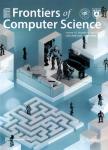版权所有:内蒙古大学图书馆 技术提供:维普资讯• 智图
内蒙古自治区呼和浩特市赛罕区大学西街235号 邮编: 010021

作者机构:College of Computer National University of Defense Technology Changsha 410073 China National Laboratory for Parallel and Distributed Processing National University of Defense Technology Changsha 410073 China
出 版 物:《Frontiers of Computer Science》 (中国计算机科学前沿(英文版))
年 卷 期:2019年第13卷第5期
页 面:976-995页
核心收录:
学科分类:12[管理学] 1201[管理学-管理科学与工程(可授管理学、工学学位)] 08[工学]
主 题:service field service energy level service jumping service management service discovery multiple clouds
摘 要:In diverse and self-governed multiple clouds context, the service management and discovery are greatly challenged by the dynamic and evolving features of services. How to manage the features of cloud services and support accurate and efficient service discovery has becomean open problem in the area of cloud computing. This paper proposes a field model of multiple cloud services and corresponding service discovery method to address the issue. Different from existing researches, our approach is inspired by Bohr atom model. We use the abstraction of energy level and jumping mechanism to describe services status and variations, and thereby to support the service demarcation and discovery. The contributions of this paper are threefold. First, we propose the abstraction of service energy level to represent the status of services, and service jumping mechanism to investigate the dynamic and evolving features as the variations and re-demarcation of cloud services according to their energy levels. Second, we present user acceptable service region to describe the services satisfying users requests and corresponding service discovery method, which can significantly decrease services search scope and improve the speed and precision of service discovery. Third, a series of algorithms are designed to implement the generation of field model, user acceptable service regions, service jumping mechanism, and user-oriented service discovery. We have conducted an extensive experiments on QWS dataset to validate and evaluate our proposed models and algorithms. The results show that field model can well support the representation of dynamic and evolving aspects of services in multiple clouds context and the algorithms can improve the accuracy and efficiency of service discovery.